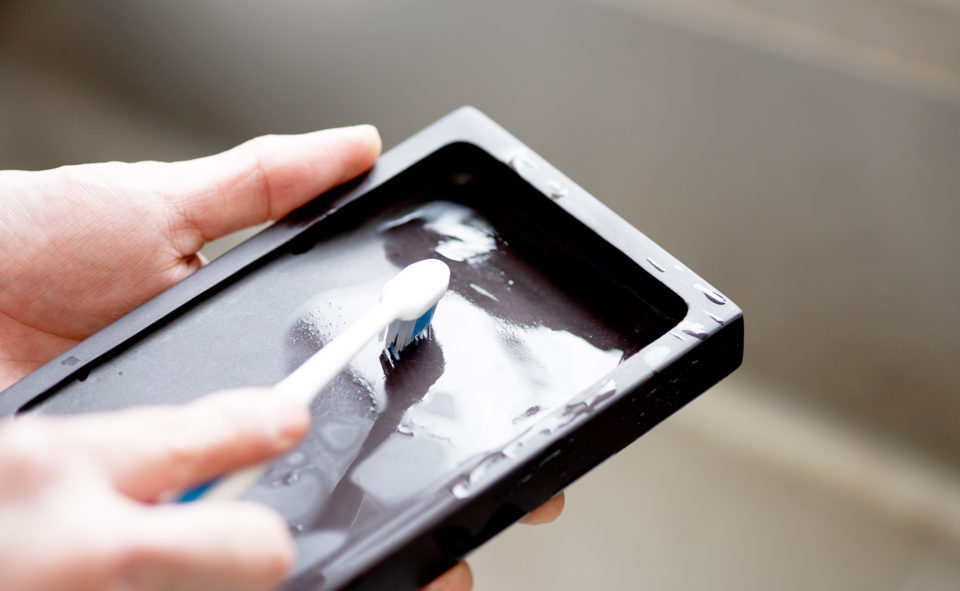記事見出し
The inkstone, as a tool for grinding ink, has its origins dating back to the Yin Dynasty, around 2,000 years before the common era. It was introduced to Japan during the Asuka period. In ancient times, inkstones were crafted from various materials, including stone, clay, tiles, jade, and pottery. Over time, with the discovery of stone materials known as “Meikens,” and the skillful work of sculptors, inkstones evolved from utilitarian objects to items appreciated for their artistic value.
Calligraphy is said to begin with the grinding of ink, so the process of grinding ink is highly regarded. It’s a practice of cleansing the heart and mind while using a clean and well-maintained inkstone.
Failure to keep your inkstone clean can have detrimental effects. Accumulated ink can degrade the quality of ink and even produce unpleasant odors. Furthermore, the decay of encrusted ink can lead to issues during mounting processes.
To maintain your inkstone, it’s essential to diligently clean it each time you use it. By doing so, you can keep it in pristine condition and enjoy its use for a long time. Here, we’ll introduce the proper care methods for your cherished “inkstone.”
How to Clean an Inkstone
1.Soak the inkstone in hot water for about 20 to 30 minutes.
The glue, which is the main ingredient in ink, can be dissolved in hot water. The optimal temperature for dissolving the glue is around 70°C. Soaking the inkstone in water at about 70°C makes it easier to remove accumulated soot and glue residue, and it helps to clear any blockages.
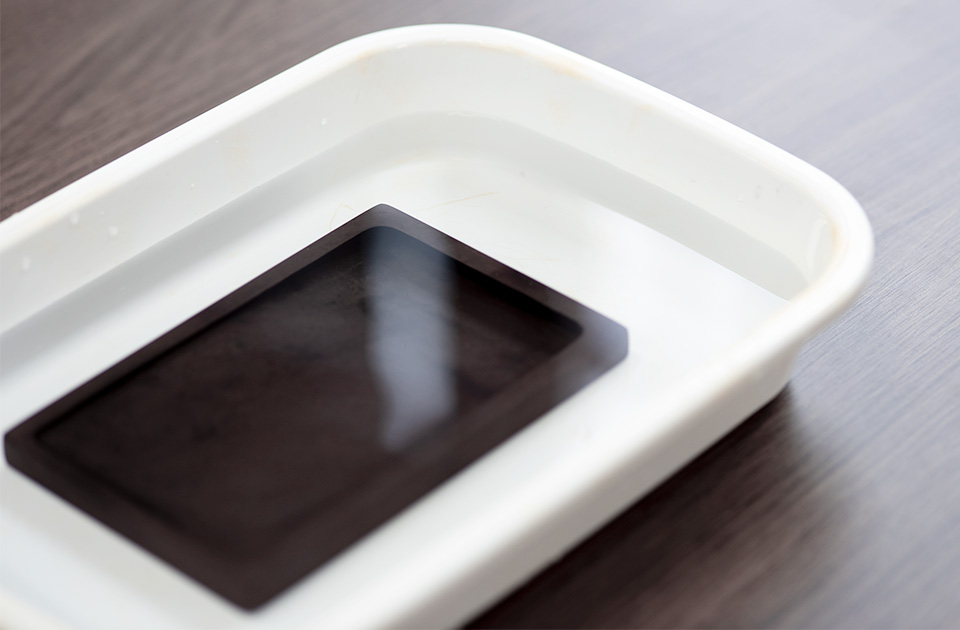
2.Gently clean the inkstone with a soft material.
To prevent scratching the inkstone, use a soft sponge or a toothbrush with soft bristles to gently and thoroughly rinse it with water. Pay special attention to areas around the edges and corners of the inkstone that may be hard to clean.

3.Remove excess moisture and allow it to air dry.
After washing, use a cloth or similar material to remove excess moisture, and then let the inkstone air dry. Avoid rapid drying methods.
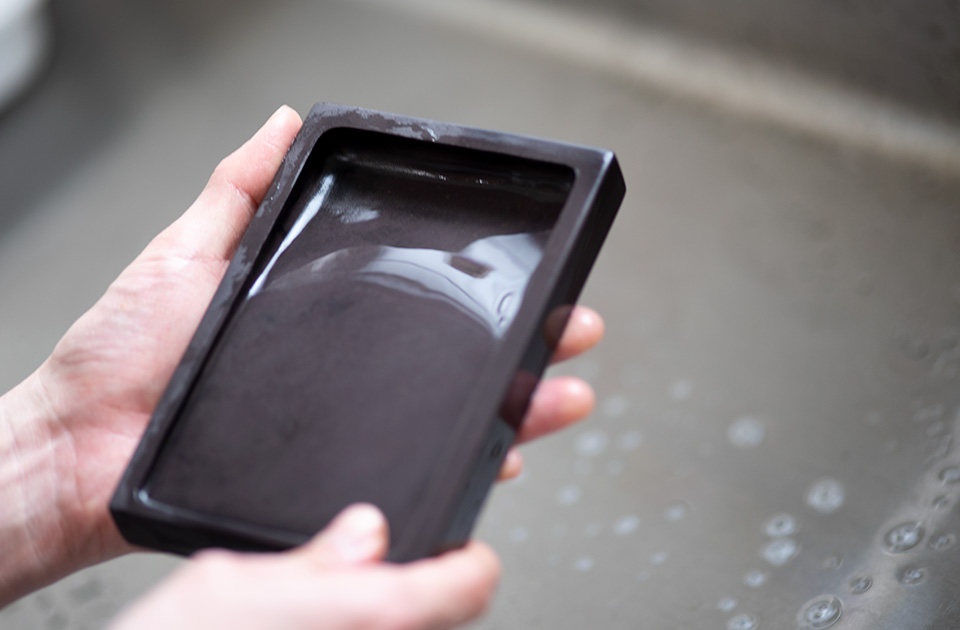
If the ink has hardened and is difficult to remove:
When you need to remove stubbornly adhered ink, you can follow the same steps as mentioned above (1, 2, 3) for cleaning. If the ink stains still persist, try soaking the inkstone in hot water for a longer period and repeat the previous steps patiently.
If you find it difficult to grind the ink:
Some may have experienced difficulty in grinding ink, feeling that it’s not grinding well or not achieving the desired consistency. The process of grinding ink on the inkstone relies on the fine irregularities on the inkstone’s surface called “Hobo” (鋒鋩). These irregularities act like abrasive surfaces, aiding in the grinding process. However, over time, these irregularities can wear down, making it harder to grind ink.
If you encounter difficulty in grinding ink, here are some methods to try:
1.Clean the Inkstone Thoroughly:
Even if the surface of the inkstone appears clean, there might be soot or glue residue clogging the Hobo’s irregularities, preventing proper grinding. To address this, soak the inkstone in water at around 70°C for 20 to 30 minutes, then gently and thoroughly wash it with a soft sponge or a toothbrush with soft bristles. This process may need to be repeated several times if it hasn’t been done before.
2.Check the Type of Ink:
While it’s uncommon for Japanese ink (Sumi) to be difficult to grind, Chinese ink (Tosho) tends to be less easy to grind (resulting in a lighter black). If you are using Chinese ink and are having trouble grinding it to your liking, consider switching to Japanese ink as an alternative.
3.Resharpen the Inkstone (Hone the Hobo):
If washing the inkstone and changing the type of ink do not yield satisfactory results, the final option is to resharpen the Hobo, a process known as “Metate” (目立て). This involves carefully re-sharpening the fine irregularities on the inkstone’s surface to restore its grinding efficiency. However, this is a delicate process and should be approached with caution. Please refer to detailed instructions for Metate for specific guidance.
Metate is a skilled technique and should only be used as a last resort. Proceed with great care and, if unsure, seek guidance from experts in the field.
Method for Resharpening the Inkstone (Honing)
There are two main methods for resharpening the inkstone:
1.Using a cream abrasive
2.Using a cream abrasive and waterproof sandpaper
3.Using a dedicated inkstone sharpening stone
I’ll explain each method in order, but before that, let’s cover some preliminary information.
High-quality inkstones typically do not experience significant wear from regular use. Therefore, it’s often unnecessary to resharpen a high-quality inkstone. In fact, attempting to resharpen an inkstone can, in some cases, alter its surface color or even lead to damage, as shown in the image below. It is generally recommended only as a last resort for those who are confident in their inkstone care and willing to take full responsibility.
1.Using a cream abrasive
For this method, you’ll use a well-known cream cleanser like “Jif.” Jif is an alkaline cream cleanser that combines surfactants to lift dirt and abrasive materials to remove stains. The abrasive used in Jif is natural calcite, which is softer than glass or stainless steel and won’t scratch the inkstone’s surface while effectively cleaning it.
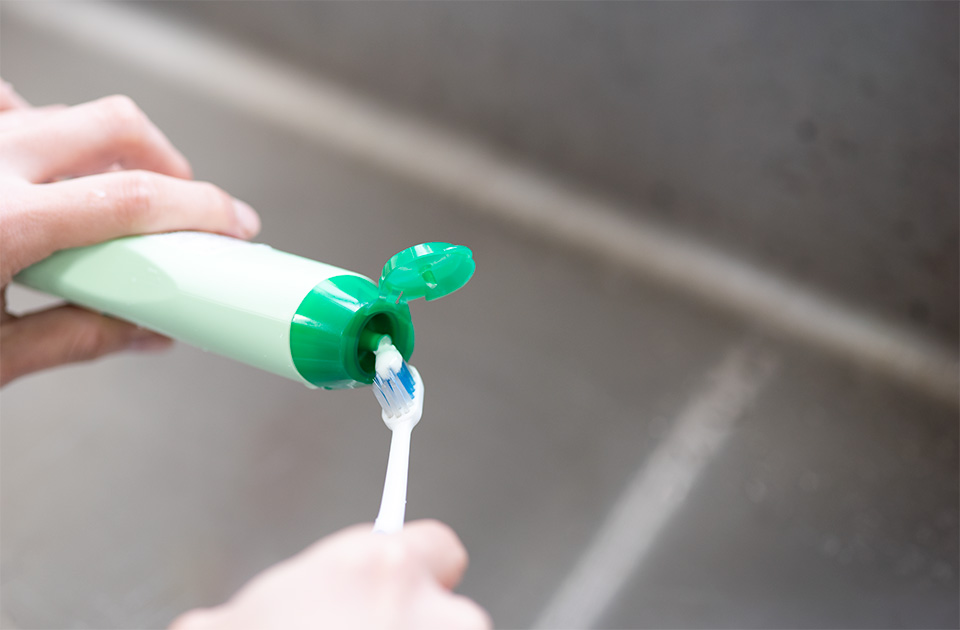
The usage is quite simple. You soak the inkstone in water at around 70°C, which is said to be ideal for dissolving glue, for about 20 to 30 minutes. The heat from the water helps dissolve any glue that has adhered to the inkstone. After removing the inkstone from the water, apply Jif to a toothbrush and gently rub it in a circular motion as if you were grinding ink. (Be sure not to scrub too vigorously.) Make sure to rub not only the inkwell (hill) where you grind ink but also the corners and hard-to-reach places where ink tends to accumulate. By repeating this process all over the inkstone multiple times, the coarse particles of Jif’s abrasive will gradually become finer. So, be patient and make it clean.
Once it’s clean, rinse the inkstone thoroughly with water at about 40°C and wipe away any excess moisture. Due to the surface being worn down by the Jif, the inkstone’s color may change to its original bright stone color, but don’t worry. It will naturally blend in as you continue to use and clean the inkstone.
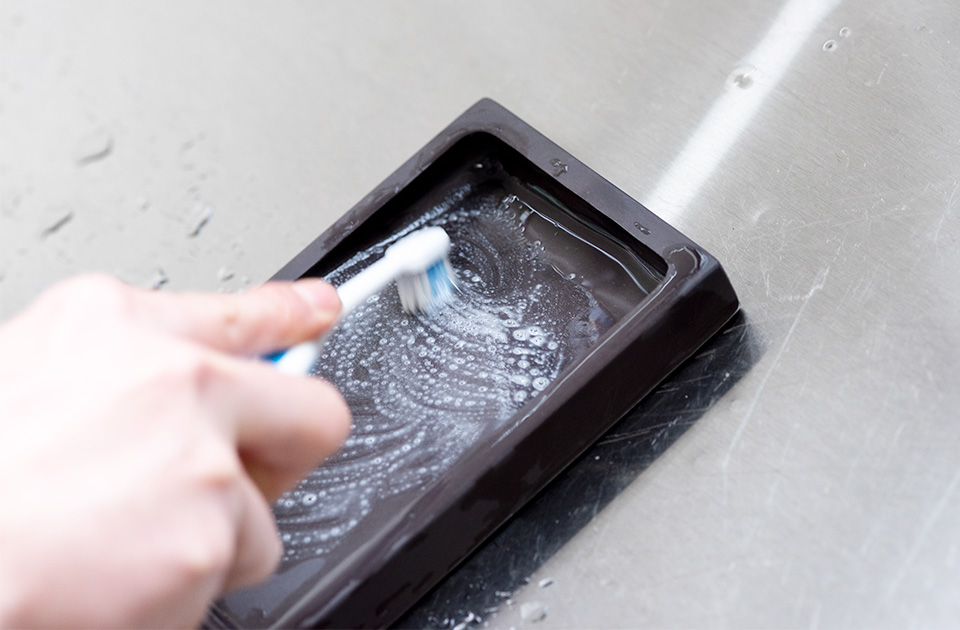
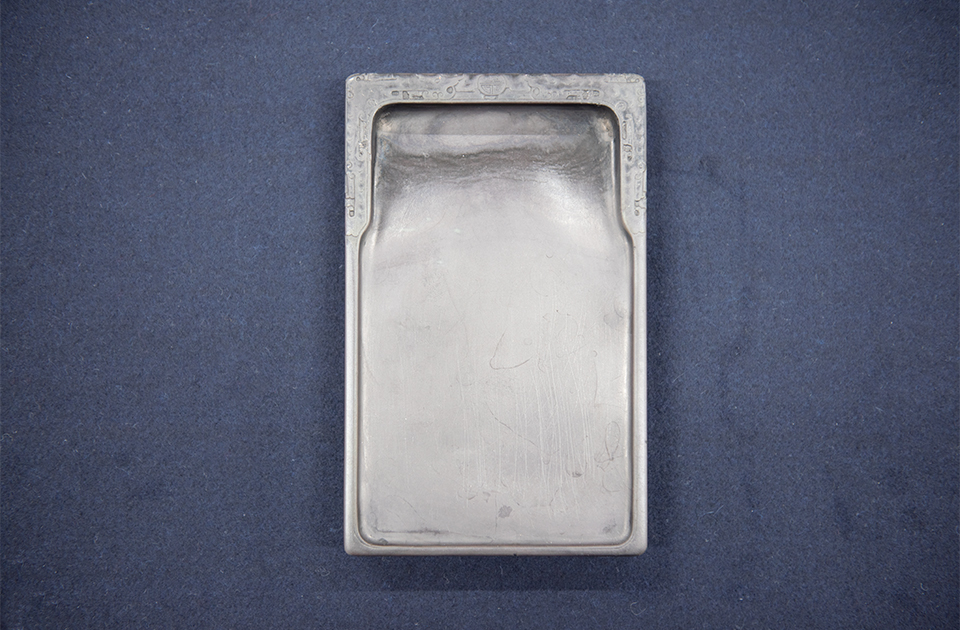
Here’s the state after Jif polishing.
Please note that when you perform this polishing, the color of the inkstone will inevitably change as shown in the post-polishing image. If you prefer not to change the color of your inkstone, it’s advisable not to proceed with the honing.
2.Using a Cream Abrasive and Waterproof Sandpaper
If the inkstone honed with Jif in the previous step feels like the irregularities (Hobo) are too pronounced, you can use waterproof sandpaper (refer to *Note 1 for the grit size) to fine-tune it.
Start by thoroughly wetting the inkstone and then use waterproof sandpaper to polish the entire inkwell (hill) where you grind ink. This will help to remove excess parts around the Hobo while keeping the Hobo itself intact, improving the grinding experience.
Cut the waterproof sandpaper into small pieces, fold them, and place them on your fingertip. Imagine making circular motions as you would when grinding ink, and rub the entire surface evenly. Rather than pressing the sandpaper onto the inkstone with force, apply gentle, even pressure across the surface. Keep in mind that waterproof sandpaper tends to clog quickly, so replace it a few times as you sense resistance to maintain consistent performance.
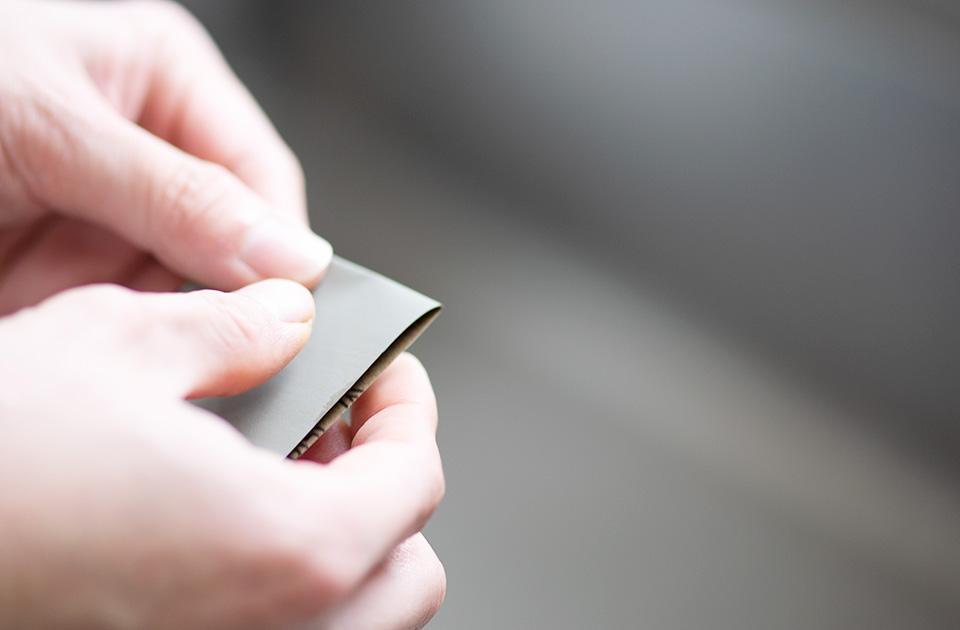
(*Note 1) The grit size of the waterproof sandpaper may need to be adjusted based on the type of inkstone you have. Here are rough guidelines for the grit size of waterproof sandpaper:
For Enden Inkstones: #2000 to #3000 For Keisyu Inkstones: #800 to #1000 For Romen Inkstones: #600 to #700 For Student Romen Inkstones: #400 to #500 *Note that the higher the number, the finer the grit. If you seek a finer polishing texture, you can use #3000 or #4000 waterproof sandpaper.
As previously mentioned, it’s generally not necessary to hone a well-maintained inkstone. Honing should only be considered as a last resort, and it should be undertaken with self-responsibility, keeping in mind that it can change the inkstone’s appearance.
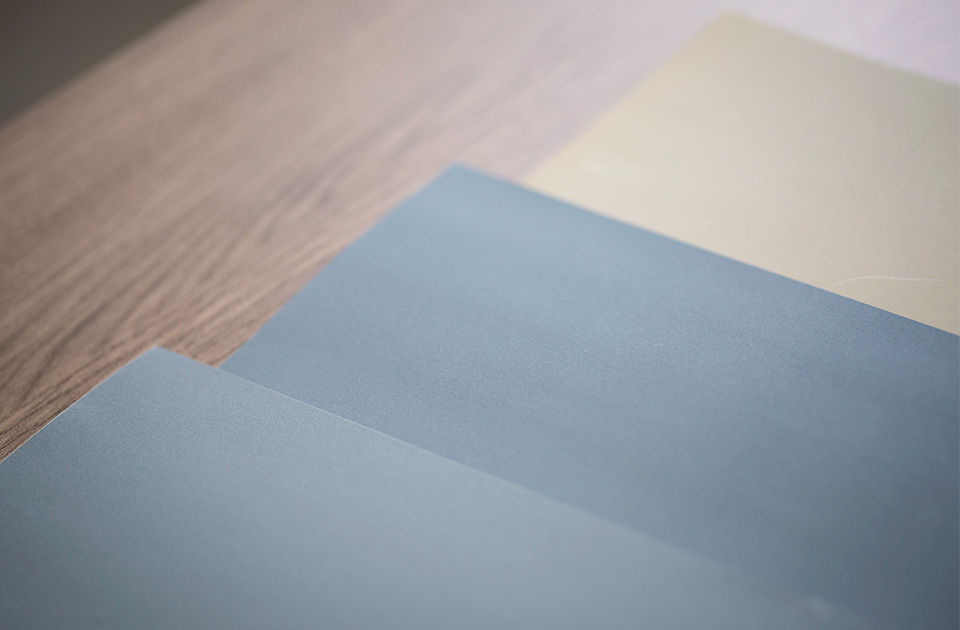
*Please note that when polishing, the color of the inkstone will inevitably change as shown in the post-polishing image. If you prefer not to change the color of your inkstone, it’s advisable not to proceed with the honing.
3.Using a Dedicated Inkstone Sharpening Stone
One well-known method for honing an inkstone is to use a dedicated inkstone sharpening stone. These stones are typically made by cutting solidified layers of clay. However, since clay sharpening stones may contain ultra-fine impurities like metal, gravel, or glass, there is a possibility that they can scratch the inkstone when used.
Now, let’s discuss how to use the sharpening stone on the inkstone. When using a clay sharpening stone, it’s essential to soak the inkstone in water beforehand and then gently apply the sharpening stone as if you were grinding ink.
For the corners of the inkstone or hard-to-reach areas, consider breaking the sharpening stone into smaller pieces and using these fragments for sharpening.
It’s crucial to understand that when applying the sharpening stone, the goal is not to correct the irregularities on the inkstone’s surface but rather to perform honing. Therefore, instead of exerting force while using the sharpening stone, apply gentle pressure similar to how you would when grinding ink.
Once you’ve finished using the sharpening stone, thoroughly rinse the inkstone, and wipe away any excess moisture.
Using the Sharpening Stone on Suitable and Unsuitable Inkstones
Since clay sharpening stones are made from natural materials, there’s a possibility that the ultra-fine gravel contained in them can damage the inkstone. Therefore, if you’re wondering which inkstones are suitable for clay sharpening stone use, the honest answer is that “in general, it’s wise to avoid using clay sharpening stones on any inkstone.” Because clay sharpening stones are made from natural materials, it’s possible for the tiny gravel to damage the inkstone. If you absolutely need to use a clay sharpening stone, it’s recommended to do so only on an inkstone you can accept potential damage on.
When Ink Doesn’t Grind Well Right After Purchase
This is a phenomenon often observed with Chinese inkstones. Newly purchased inkstones are sometimes coated on the surface to maintain their visual appeal. However, these coated inkstones may not perform well when grinding ink, with the ink appearing resistant and sliding on the inkstone’s surface, sometimes even repelling water.
In such cases, follow the instructions for “Cleaning the Inkstone.” Soak the inkstone in water at around 70°C for about 20 to 30 minutes, then gently clean it with a soft material, repeating this process several times. This will remove the coating, allowing the ink to grind effectively. (Since the coating on the inkstone is often made of wax, the ideal temperature for dissolving wax is similar to the temperature for dissolving glue, around 70°C.)
If you still feel some discomfort even after multiple cleanings, simply continue using the inkstone for grinding ink and cleaning it as you would normally. Over time, the coating will naturally wear off, and the inkstone will return to its original grinding condition.

